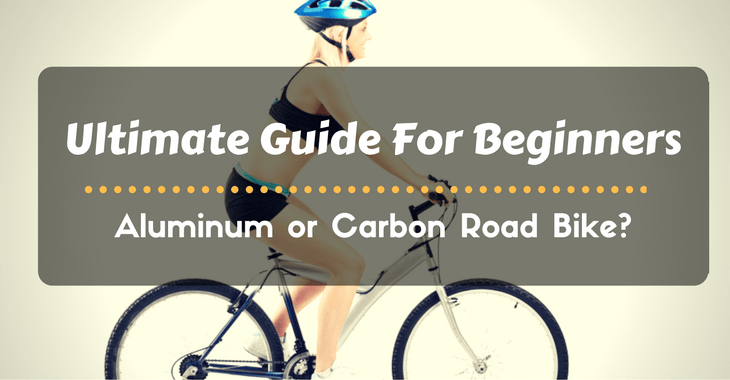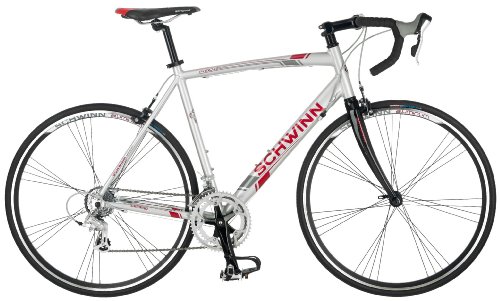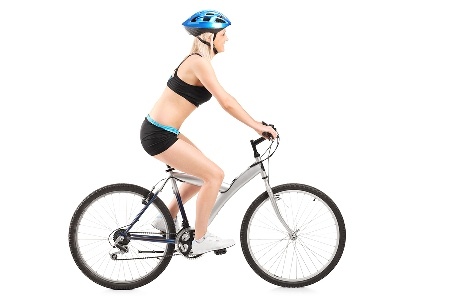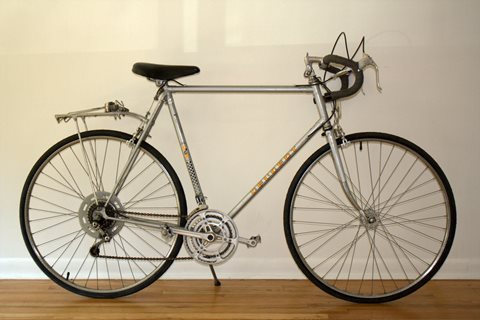
Ultimate Guide For Beginners: Aluminum or Carbon Road Bike?
Welcome to the world of bikes. When you ask a sales person in a bike store for recommendations, he or she will usually give you options on aluminium or carbon road bikes for beginners. These two materials are the most common options in the entry-level and professional range. However, each one has its pro and cons, depending on where you will use it. How do you determine which one is the best fit for you?
Before You Shop
Second to your fitness level, the bike you use will contribute greatly to your overall performance. Many beginners who want to pursue cycling often get distracted with all the technical details associated with road bikes. Why can’t it just be as simple as choosing the color and design you like? You’ll probably be spending, at least, an hour or two a day on your new bike for a couple of weeks, and usually, bad experiences at this stage discourage people to go on further. Finding a good bike means avoiding most of the long-term problems like pain in your knees, shoulders and back.
Before you shop for your dream bike, take a couple of minutes to answer the questions below. There are no correct answers for this short test; it’s meant to simplify all your shopping options and define what you truly need from a road bike.
- What are your road cycling goals? Bike manufacturers design their bikes based on their type and usage. Are you a going to race, or is it for daily commute and weekend trails?
- Where do you plan to ride frequently? Along with your answer to the first question, your choice of material for the bike frame and parts will affect the ride quality and performance. Some beginners focus on paved bike paths at parks and country roads or some invest on bikes designed for rough outdoor trails.
- What’s your budget range? For an extensive introduction on types of bikes and their price ranges, you can check online stores. As a beginner, the usual choice will be on entry-level budget bikes, but bear in mind that you get what you pay for. If you plan to focus on road cycling for a long time, know that you have to include in your future budget the costs of upgrades and repairs.

We’ll keep it simple for you. This short guide is meant to give you a good overview of the pros and cons of aluminium and carbon road bikes and help you make an educated decision on what’s the best bike that fits you.
If you’ve answered the questions on the first section, it’ll help you a lot on weighing which one is better for you. Let’s start with the main factors that we look for when buying a bike: cost, durability, comfort and design. We’ll expand this by the following:
- Cost – This is usually the determining factor when you make purchases. In many cases, it’s the brand that adds digits into higher price tags. However in this guide, we’ll focus more on the difference between aluminium and carbon bikes. Remember again; you get what you pay for.
- Weight – What type of bike do you want to carry along the road? Weight is usually the concern if you’re into racing, as you’ll need an ultra-lightweight bike. However, road bikes made for touring are designed to be heavy and tough, for it to withstand days to weeks of cycling. Each type of material weighs differently and remember it’s not just the main bike frame that you should look at if you’re looking for a lightweight model, other parts of the bike also contribute to the entire weight.
- Stiffness and Ride Quality – This two variables come hand and hand to each other. Focus on material stiffness; then you’ll have to compromise on ride quality and vice versa. Stiff materials are more efficient in transferring your energy into pedal power. On the other hand, flexible or less stiff materials absorb more of the vibration from rough roads, thus giving you more cushion and less impact on your body. The downside is that flexible materials can reduce cycling efficiency.
- Durability – We want our investments to last and as much as possible, reduce the need for repairs and extensive maintenance. If your answer to the question no.2 in the previous section is on outdoor trails where your bike will be susceptible to weather, water and rough terrain, then you should get the material that can withstand those forces.
- Best For – This section will mention on which material is best for your cycling goals. With the answers you gave from the first section on Before You Shop, you should have an idea now on what type of cyclist you are or want to be, or the type of bike you need.
What Kind of Frame Material Do I Want – Aluminum or Carbon?
Aluminum Road Bikes
Aluminum is the most common material used in bike frames and parts, and you’ll find this in most of the entry-level models. Steel was the original material used for bikes, but when aluminium and aluminium alloys were introduced in the 19th century, it became the popular choice of material.
Cost
Bikes with aluminium frames often fall in the entry-level category, but there are also some in professional range. It’s the inexpensive choice for beginners who are in the budget but don’t dismiss this as the material that provides the least quality. Depending on the usage and terrain where you’ll use the bike often, aluminium frames can last up to 5 years!
Weight
Aluminium is lightweight compared to carbon frames, which makes it ideal for sprints and climbs. However, this does not mean that all aluminium bikes weigh less than a bike with a carbon frame. Different parts of the aluminium frame can vary in tube thickness. Bike manufacturers often design thicker tubes on parts that are under heavy strain.
Durability
Compared to heavy steel frames, aluminum does not rust. This is the reason many mountain biking and outdoor cyclists choose aluminium because it’s inexpensive, and does not require frequent maintenance. Compared to carbon, aluminium has lower strength. Bike manufacturers resolve this problem by creating thicker tubes for added durability.
Stiffness and Ride Quality
Aluminum frames are hard. Therefore, it doesn’t absorb or reduce the vibrations from the bike, and these are transferred to your body along the ride. If you’re in rough or harsh roads, you’ll feel the strain right away. However, because of its high stiffness, aluminium frames are pretty stable for sprinting and climbing on outdoor trails. This is also an advantage for racing cyclists, as stability and stiffness mean better efficiency and pedal power. Heavy aluminium frames with thicker tubes are also designed for touring, as it can carry the load and strength for long rides.
Recommended For:
With all the features, pro and cons balanced out; we can say that aluminium road bikes are great for beginner cyclists that are into paved or smooth bike trails. It’s low maintenance, and it can be impervious to weather and rain as riders do not need to worry about rust. Other features point out that its best for:
- If you have a low budget for a beginner’s road bike but still want good performance.
- If you’re a mountain biker, aluminium frames can be uncomfortable.
- If you’re into speed and touring, aluminium frames can provide the stability and efficiency you’ll need along the road.
Carbon Road Bikes
Carbon is one of the toughest materials ever invented. What exactly are carbon bike frames made of? Weaves of carbon fiber are held together by resin to form the frame material and then it’s molded into the designed bike frame. The quality of the weave will also determine the durability and weight of the whole frame.

Cost
Carbon road bikes can be quite expensive. The carbon fiber material itself is expensive and hard to manufacture. However, there are entry-level carbon fiber bikes that are in the same price range with a model with aluminium frames. If you’re considering on buying the cheapest carbon road bikes, always weigh-in the quality of the other bike components. Some manufacturers attach lower standard bike parts to carbon frames to lower the total price.
Weight
In general, carbon fiber is lighter than aluminium material. However, this isn’t always the case on the bike’s overall weight. Lower quality carbon frames can be heavier than some well-designed aluminium frames as some manufacturers apply more resin to hold the fibers.
Durability
You can rely on carbon frames to withstand harsh roads. The material is very strong and durable, and some manufacturers can guarantee a lifetime warranty on carbon frames.
Stiffness and Ride Quality
Stiffness can depend on the quality of the carbon fiber weave, however, generally expect this material to have high stiffness. This implies that it has a better response to the power you input to it. This means better pedal power with each cycle.
Despite the high stiffness grade, carbon frames are more comfortable to ride on, compared to aluminium frames. The material can absorb a significant amount of vibrations in its frame, and that reduces the strain and stress transferred to your body.
Recommended For:
Carbon road bikes are great for beginners who are seeking to invest on bikes built for longer rides. If budget is not an issue, look for a good carbon bike model that also has good quality parts and fits your body frame. Overall, carbon fiber road bikes are great:
- If you’re looking for a bike to be used daily and for long rides, carbon bikes are more comfortable to ride on compared to their aluminium counterpart.
- If you’re a beginner training for racing, carbon bikes can give you that lightweight feel.
- Looking further than the road, if you want a bike that will keep up with your training as you advance, carbon road bikes can last a lifetime with good maintenance.
Anatomy of the Best Bike Fit

Now that you know the pros and cons between aluminium and carbon bike frames, the next step is to choose the best fit bike for you. Decades ago, when you buy a pair of jeans, there’s not much complexity. You get the new design trend and what fits you, and you’re off from the store. Nowadays, it’s quite more complicated as each brand has its size table with modifications based on their designs. Do you want skinny, carrot, narrow or straight cut? Sometimes we’ll just ask ourselves if we’re lucky to have access to these many choices or have we just made the world too complicated?
Same goes for buying a new bike. Aluminum frames are often manufactured with variations on tube thickness. On the other hand, it’s easier to find more flexible designs for bike frames made of carbon fiber.
As a beginner, whether you decide to get an aluminium or carbon fiber bike, it’s best to drop by a bike store and sit on the bike itself to get the best fit, or, at least, have an idea on what size and other measurements fit you. There are brands, designs, component materials and a size that work best for your body. The two most important factors that determine that best bike fit are the height and reach.
- Height – Sit on the bike, and put one foot on the pedal, and let the other support you on the floor. With one foot on the bottom pedal, the height of the seat should be at a level where there is a slight bend on your knees. Too much bending can pose too much force on your knees, which can be the cause of injury.
- Reach – While sitting on the bike, reach out to the handlebars. Your torso should be comfortably bent 45 degrees on the bike. If you feel that the bars are too far, it’ll be hard to control the bike. Too near and your arms will be too close to your knees when you pedal.
From this basic guide, be mentally flexible when it comes to what type of terrain you’d like to go often, and to what form is best for your body. Bikes for touring are designed to keep your body in a more upright position. If you’re into racing, aerodynamics play a role and bikes are usually designed for your body to be in a lower position.
Conclusion
If you’re asked by another biker – Aluminum or carbon road bikes for beginners, which one will you choose? Does the frame material matter? As a beginner, the differences on features, durability and performance by your road bike can contribute a lot on how much you will progress in this sport or hobby.
Usually, the first criteria considered when buying a bike are the price tag. As we’ve mentioned, aluminium road bikes can still be a great choice even if you’re on a budget. However, be prepared for upgrades or a new bike purchase if you find yourself in need for a lighter and stronger frame in the future.
Likewise, if you opt for a carbon bike with cheaper price tag or fiber grade, it might cause you similar problems. Opt for comfort and better quality models, if you have the money to spare. And the most important of all, get the best fit and size for you.
About the Author Nick Soros
Hi, I'm Nick Soros. I have been an cycling enthusiast from 2006. Ezroadbike.com is my personal blog where I share my pedaling experience. No matter you are a new cyclist or skillful one, you would find useful topics in my site. Have a great cycling...

